BofA update shows where active managers are putting money
Etsy Inc . (NASDAQ:ETSY) shares jumped 6.14% in premarket trading after the company released its Q2 2025 financial results on July 30, showing revenue growth despite declining gross merchandise sales (GMS). The e-commerce platform, which recently completed the sale of its Reverb marketplace, reported consolidated revenue of $673 million, up 3.8% year-over-year, while GMS fell 4.8% to $2.8 billion.
Quarterly Performance Highlights
Etsy’s Q2 results exceeded expectations, with the company achieving a 25.1% adjusted EBITDA margin on $169 million in adjusted EBITDA. The company maintained a strong take rate of 24%, helping to drive revenue growth despite the decline in overall transaction volume.
As shown in the following consolidated results summary, Etsy completed the sale of Reverb on June 2, 2025, with Reverb’s contribution included for only the first two months of the quarter:
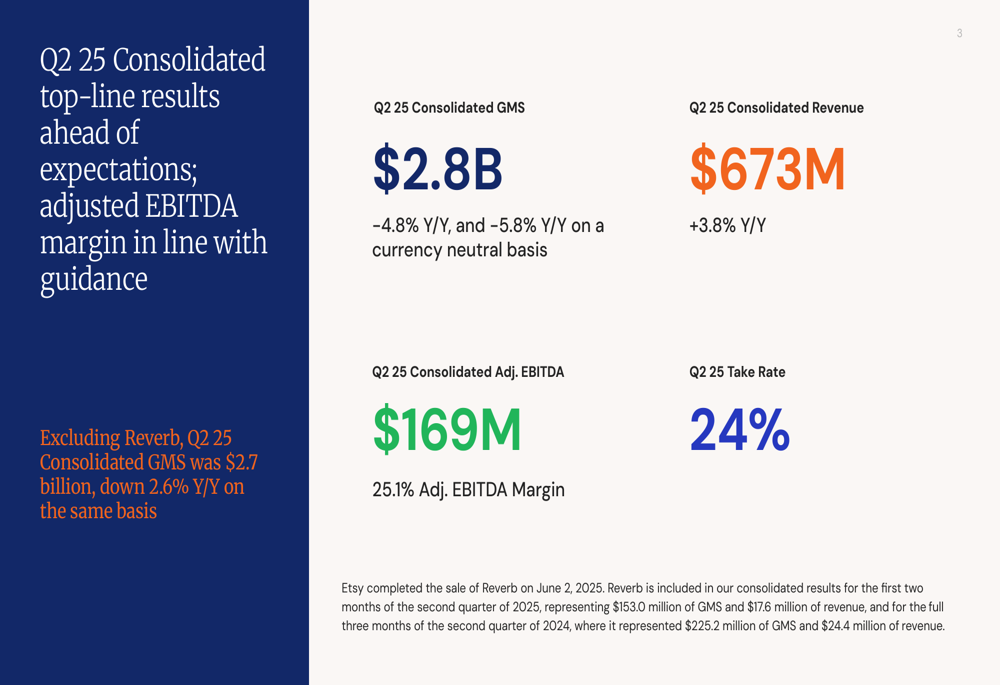
The company’s top-line performance showed improvement from the previous quarter, with results ahead of expectations. The Q2 results represent a significant turnaround from Q1 2025, when Etsy reported a substantial earnings per share miss that led to a stock decline.
As illustrated in this performance chart, the company’s revenue and adjusted EBITDA have remained relatively stable despite GMS challenges:
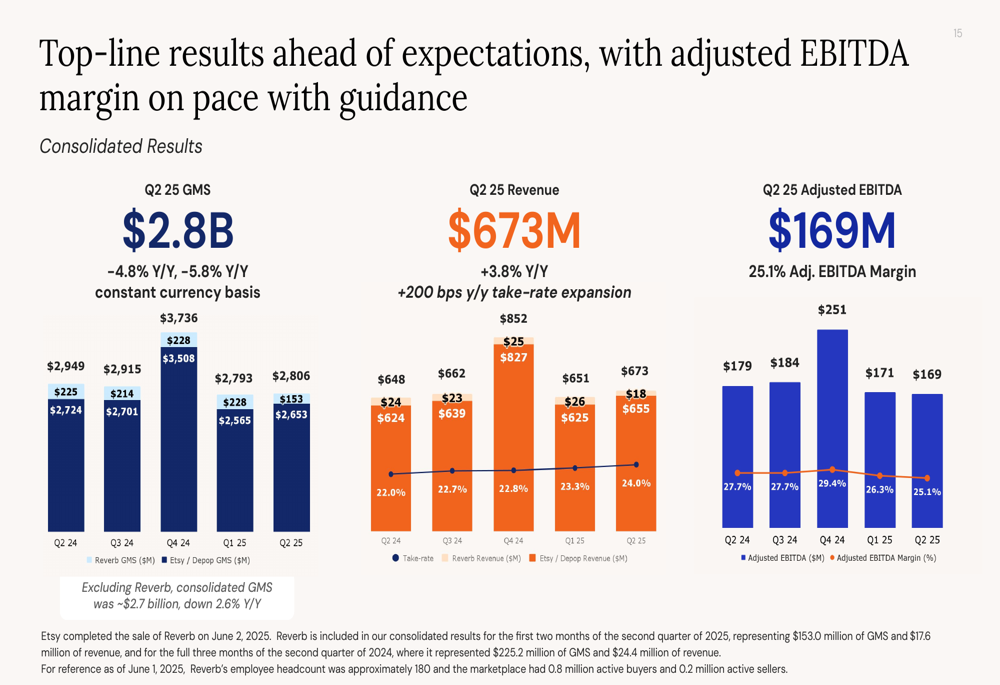
Strategic Initiatives
Etsy outlined four key initiatives aimed at driving future GMS growth on its marketplace. These strategies focus on improving discovery, leveraging machine learning, retaining valuable customers, and enhancing human connection.
The company’s strategic roadmap includes:
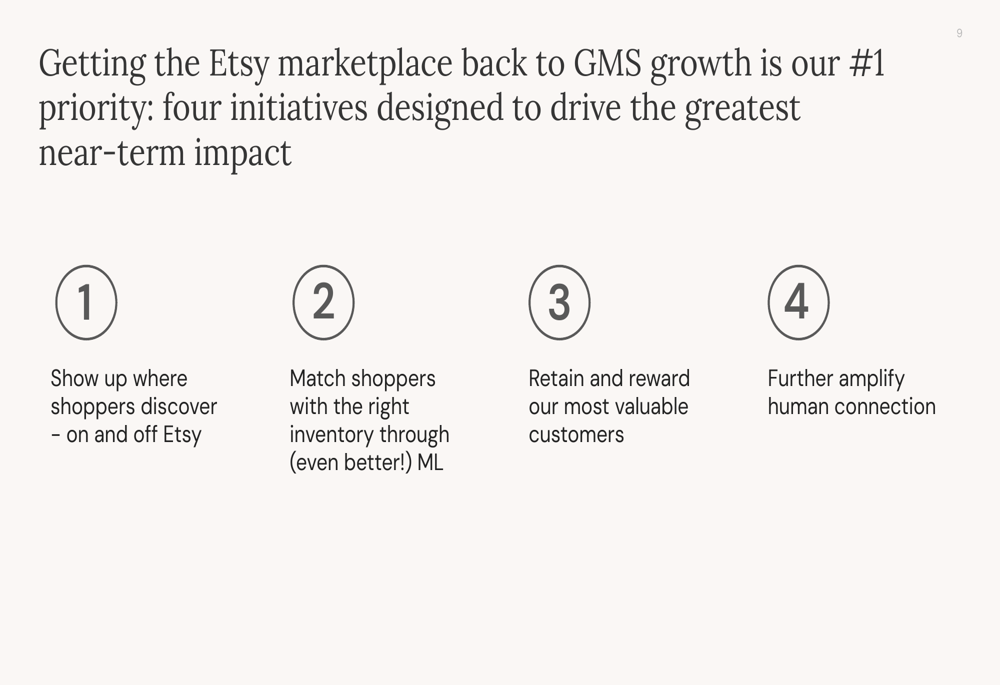
A central component of Etsy’s strategy involves creating what it calls a "customer relationship flywheel" - using browsable surfaces to gather more data about consumer interests, building powerful AI models, and delivering personalized marketing and on-site experiences.
Etsy is investing heavily in artificial intelligence to improve search capabilities and position itself as a leader in "agentic shopping" - a term referring to AI-assisted shopping experiences. The company noted it has been identified as a top retail e-commerce recipient of agentic chatbot traffic, suggesting its early efforts in this space are gaining traction.
The company is also evolving its marketing approach, shifting investment from linear TV to streaming and social media platforms. According to the presentation, GMS from owned marketing channels grew by approximately one-third year-over-year, with these channels driving an increasing share of overall GMS.
As shown in the following slide, Etsy is focusing on showing up where shoppers discover products, both on and off its platform:

Segment Performance
The company’s two main marketplaces showed divergent performance in Q2. While the core Etsy marketplace faced challenges with declining GMS, Depop demonstrated strong growth, particularly in the U.S. market.
The Etsy marketplace reported GMS of $2.4 billion, down 5.4% year-over-year, though this represented a 3.5 percentage point improvement from Q1. The company attributed this better-than-expected performance to direct marketing efforts, increased paid social investments, and strong mobile app trends.
In contrast, Depop’s GMS reached $250 million, up 35.3% year-over-year, with U.S. growth of 54%. Key drivers included growth in app download share, new buyer and active seller growth, and improvements in search and recommendations.
The following slide highlights the performance of both marketplaces:

The Etsy marketplace reported 87.3 million active buyers, down 4.6% year-over-year, while GMS per active buyer declined 2.9% to $120. However, the company noted positive trends in its mobile app, with app GMS growing year-over-year and representing approximately 45% of total Q2 GMS.
Etsy’s app improvements appear to be yielding results, as shown in this comparison of the current and in-progress app interfaces:
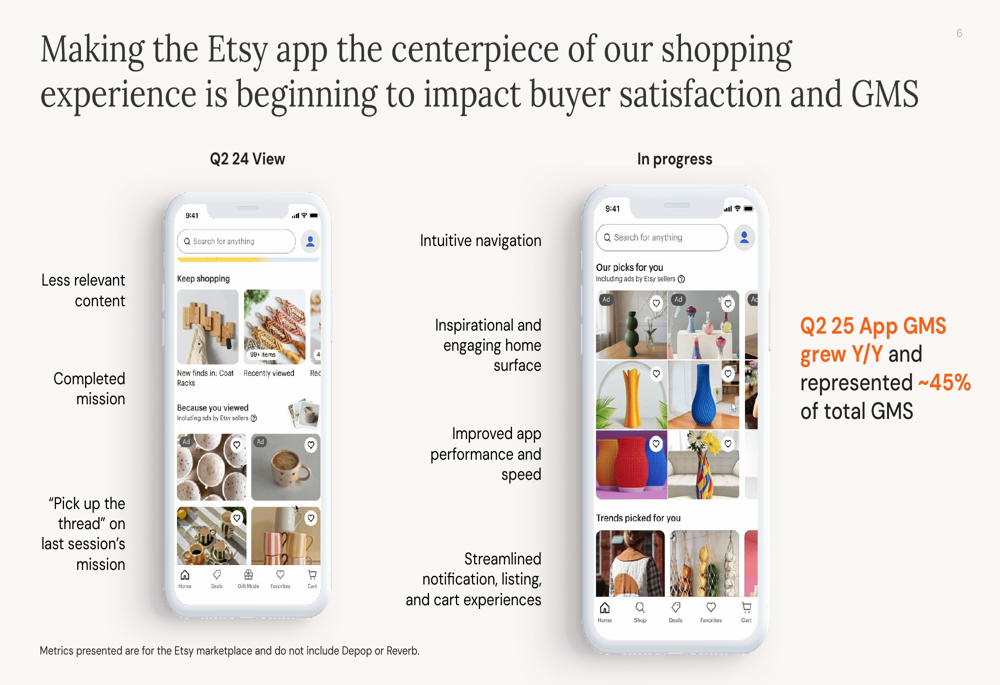
The company also reported that active sellers on the Etsy marketplace declined 18% year-over-year to 5.4 million, which it attributed to the introduction of a new seller set-up fee and stepped-up enforcement actions. Despite this decline, Etsy noted that a higher percentage of current active sellers have made a sale in the last 12 months compared to before the new fee was implemented.
Forward-Looking Statements
Looking ahead to Q3 2025, Etsy provided guidance for consolidated GMS between $2.6 billion and $2.7 billion, with an expected take rate of approximately 24.5% and an adjusted EBITDA margin of around 25%.
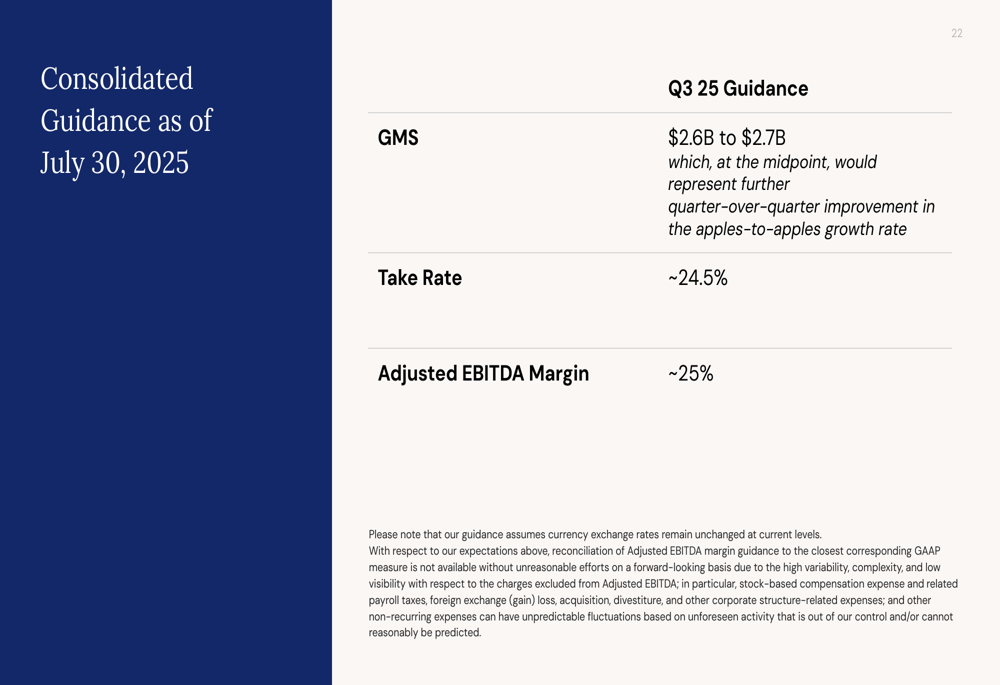
The company maintains a strong financial position, with a cash balance of approximately $1.5 billion as of June 30, 2025. During Q2, Etsy repurchased approximately $335 million in shares and generated $90 million in consolidated free cash flow.
Etsy’s management emphasized its focus on four key initiatives to drive future growth: enhancing product discovery, improving matching of shoppers with inventory through machine learning, retaining and rewarding valuable customers, and amplifying human connection on the platform.
The company’s Q2 results and strategic focus on AI and personalization appear to have resonated with investors, as evidenced by the positive premarket stock movement. This represents a significant improvement from the previous quarter when Etsy’s stock dropped following disappointing earnings results.
Full presentation:
This article was generated with the support of AI and reviewed by an editor. For more information see our T&C.
